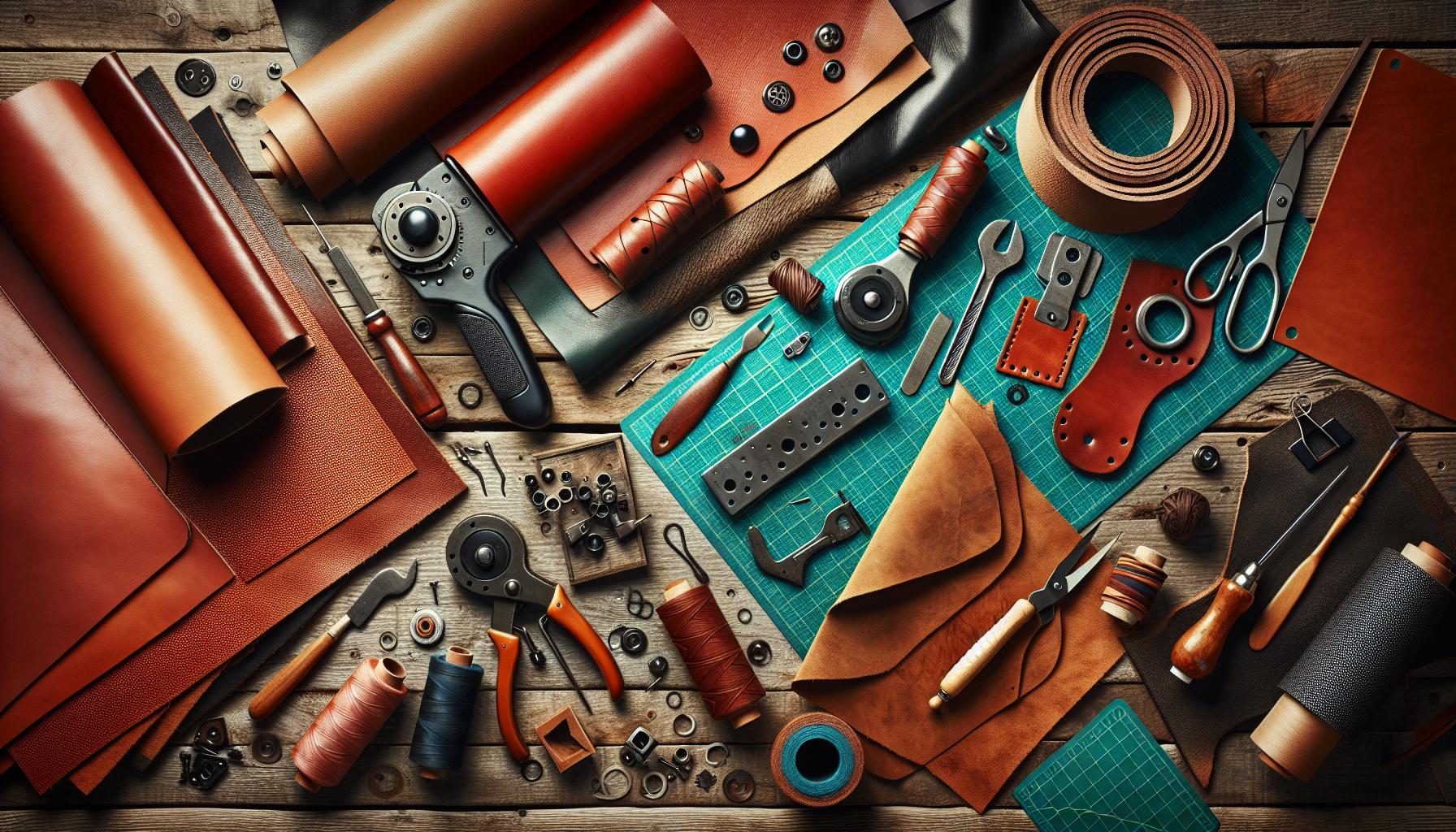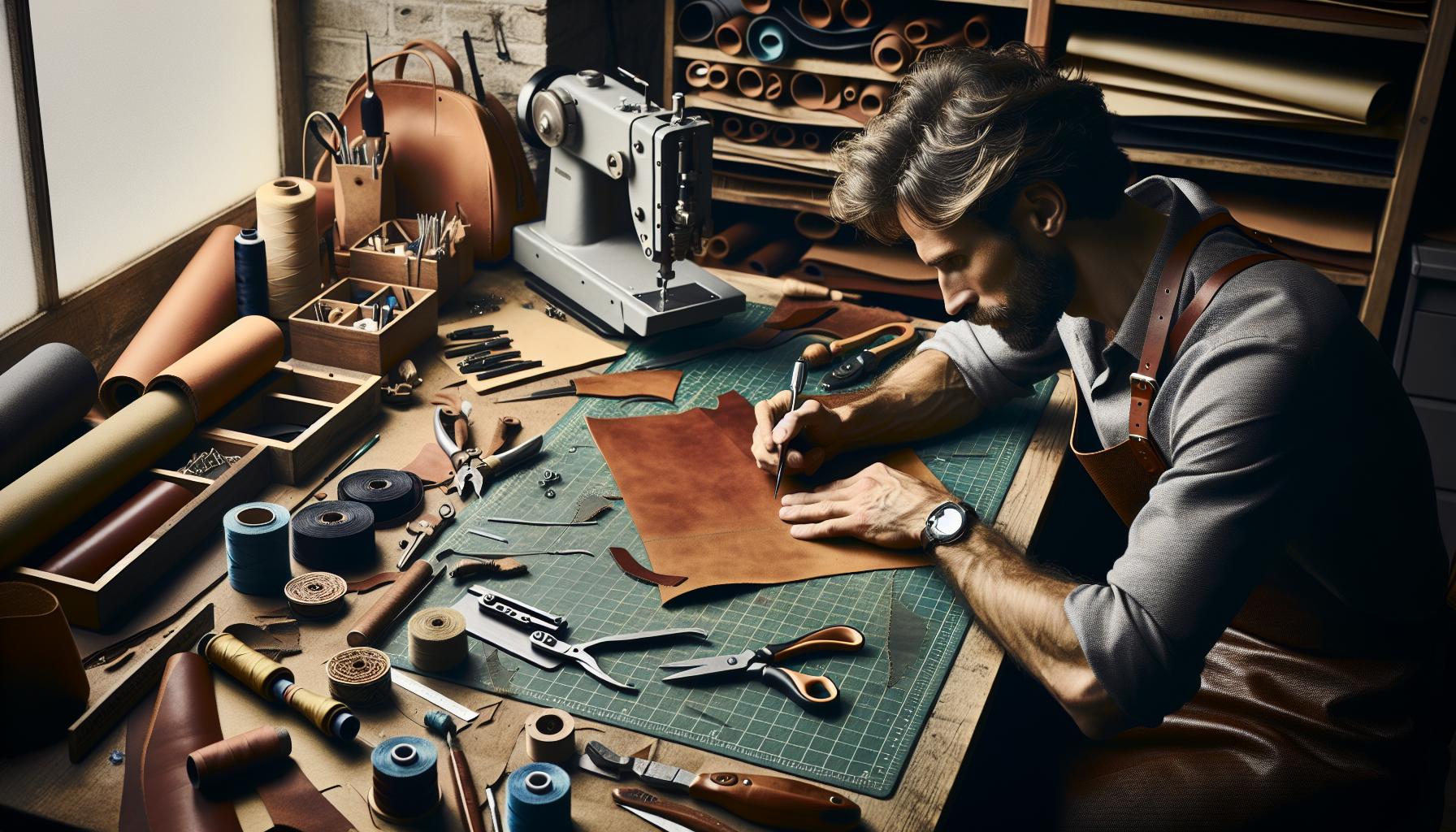Diving into the world of leather DIY projects is like opening a door to endless creativity and craftsmanship. Leather, with its rich texture and durability, offers a unique canvas for crafting enthusiasts looking to create something truly special. Whether you’re a seasoned artisan or a curious beginner, leather projects can be both rewarding and surprisingly accessible.
I’ve always found leatherworking to be a perfect blend of art and function. From crafting personalized wallets to designing custom belts or even creating chic home décor, the possibilities are nearly limitless. Plus, working with leather gives you the satisfaction of making something that not only looks great but also lasts for years.
In this article, I’ll guide you through the essential tools and techniques you need to get started with leather DIY projects. With a few basic skills and some creativity, you’ll be on your way to crafting beautiful, one-of-a-kind leather pieces in no time.
Key Takeaways
- Creativity and Durability: Leather DIY projects offer a unique blend of creativity and durability, allowing crafters to create personalized and long-lasting items such as wallets, belts, and home décor.
- Essential Tools and Materials: Equipping oneself with the right tools like rotary cutters, stitching needles, and understanding different types of leather are crucial for efficient leather crafting.
- Beginner-Friendly Projects: Starting with simple projects like wallets or keychains is ideal for beginners to practice basic leather crafting skills and gain confidence.
- Skill Development: Learning techniques like stitching and embossing not only enhances personal crafting proficiency but also opens up professional opportunities in leatherworking.
- Resources and Inspiration: Online platforms, craft stores, and community groups provide inspiration, resources, and learning opportunities for leather DIY enthusiasts to expand their skills and ideas.
Leather DIY Projects
Crafting leather projects provides numerous advantages. First, working with leather enhances creativity. It encourages unique design thinking since leather offers endless possibilities for customization and artistry. Second, leather projects create durable goods. The longevity of leather ensures that the crafted items serve practical purposes for years, from wallets to home accessories. Third, leather crafting skills are valuable. Developing techniques like stitching and embossing boosts crafting proficiency, enhancing both personal satisfaction and professional potential. Moreover, personalized gifts from leather add a thoughtful touch. Creating custom leather items demonstrates care and effort, making them cherished gifts for recipients.
Essential Tools And Materials

Leather DIY projects combine artistry and durability. An understanding of essential tools and materials enhances one’s crafting skills.
Types Of Leather
Understanding the different types of leather is crucial. Full-grain leather retains its natural surface, offering maximum durability. Top-grain leather, another popular option, provides flexibility for detailed work. Genuine leather serves as a budget-friendly choice without sacrificing quality. Suede, with its distinctive texture, adds a soft touch to projects.
Basic Tools Required
Equipping oneself with basic tools makes leather crafting more efficient. A cutting mat is indispensable for protecting surfaces and ensuring precision. Rotary cutters or utility knives enable neat cuts. Leather punches and chisels create holes for stitching. Mallets, made of rubber or wood, provide the right force without damaging materials. Stitching needles and waxed thread secure pieces together. Burnishing tools finish edges smoothly for a polished look.
Popular Leather DIY Project Ideas

I find leather DIY projects strikingly versatile and creative, encompassing everything from accessories to home décor. Here’s a closer look at some popular projects.
Leather Wallet
Crafting a leather wallet offers practicality and style. Using full-grain leather ensures durability, while precise cutting and stitching refine the project. A simple bifold design serves beginners, while advanced artisans often explore intricate patterns and embossing to create unique wallet designs. Tools like rotary cutters and stitching needles help achieve neat edges and sturdy construction.
Leather Keychain
Creating a leather keychain is an excellent introductory project. Keychains require small leather pieces, making them ideal for using scraps. Personalized designs, such as stamped initials or decorative rivets, add flair. Beginners can practice basic cutting and riveting techniques with this project, using genuine leather for an affordable yet polished finish.
Leather Notebook Cover
Designing a leather notebook cover combines functionality with personal expression. Using top-grain leather offers flexibility, enabling detailed stitching or embossed decoration. This project requires attention to detail for cut precision and punch alignment for stitching. A custom notebook cover not only protects pages but also showcases one’s creativity and skill.
Step-By-Step Guide To Starting A Leather Project

Starting a leather project requires careful planning and familiarity with essential tools and techniques. First, choose the project type. Opt for something simple like a wallet or keychain if you’re a beginner. This allows you to develop basic skills and build confidence. More experienced crafters might consider complex items, such as handbags or belts, to push their abilities.
Next, select the leather. Full-grain leather is ideal for projects demanding durability, while top-grain leather is flexible for designs requiring fine details. Genuine leather offers affordability, and suede enhances texture. Match the leather type with project requirements to ensure functionality and aesthetics.
Gather necessary tools. A cutting mat forms the project base, protecting surfaces and enabling accurate cuts. Use a rotary cutter for precise leather shaping and a leather punch for creating holes. A mallet assists in setting hardware, while stitching needles and burnishing tools finish the edges, providing a refined look. Ensure all tools are in good condition to avoid errors and inefficiencies during crafting.
Prepare the leather by tracing the pattern onto its surface. For this, a tailor’s chalk works perfectly, leaving visible lines that won’t damage the leather. Use the rotary cutter along these lines to cut the pieces with precision. Cut carefully to ensure all edges are clean and straight.
Start assembling the pieces by using leather glue for temporary adhesion. After this initial setup, stitch the pieces together using strong, waxed thread for durability. Opt for a saddle stitch technique, which creates a robust, even seam that secures the leather firmly into place.
Finish the project by smoothing edges with a burnishing tool. This step adds a polished look and prevents fraying. Apply a sealant or conditioning treatment to preserve the leather, enhancing its longevity and appearance.
Tips For Successful Leather Crafting
Experience plays a pivotal role in leather crafting. Following specific tips can greatly enhance craftsmanship and create beautiful projects.
Proper Techniques
Understanding proper techniques is crucial in leather crafting. Precision cutting improves the overall outcome of a project. A sharp rotary cutter slices cleanly through leather without jagged edges. Consistent stitching patterns contribute to a refined finish, requiring even spacing and tension. Saddle stitching, a method using two needles, enhances durability and appearance.
Avoiding Common Mistakes
Avoiding common mistakes can prevent project failures. One frequent error is neglecting to test dyes on small leather scraps, leading to unwanted colors. Skipping the step of conditioning leather results in cracks and brittleness over time. Rushing through the process often causes overlooked details, resulting in subpar craftsmanship. Proper attention improves project quality and ensures satisfaction.
Where To Find Inspiration And Resources
Exploring online platforms is key for finding leather DIY inspiration. Websites like Pinterest and Instagram showcase diverse projects from creative crafters worldwide. By following experienced leatherworkers, I can discover new designs and innovative techniques.
Visiting craft supply stores provides access to quality materials and knowledgeable staff. Many stores offer classes or workshops where I can learn new skills and gain inspiration from other enthusiasts.
Joining online communities, such as Reddit threads or Facebook groups, connects me with other crafters who share tips and resources. By participating in these discussions, I can gain insights and advice for my leather projects.
Books and magazines dedicated to leatherworking are valuable resources. Publications offer detailed tutorials, pattern ideas, and expert interviews that fuel creativity.
Attending leather craft fairs and exhibitions introduces me to skilled artisans and their work. These events offer opportunities to observe techniques firsthand and discuss projects with professionals, sparking fresh ideas for my creations.
Embarking on leather DIY projects opens up a world of creativity and craftsmanship. With the right tools and a bit of practice, anyone can create stunning pieces that blend art and utility. The personal satisfaction of crafting something unique and durable is unmatched. As you dive into this rewarding hobby, remember to take your time and enjoy the process. Whether you’re crafting a simple keychain or a detailed handbag, each project offers a chance to learn and grow. So gather your materials and let your imagination guide you in creating beautiful leather goods that stand the test of time.

